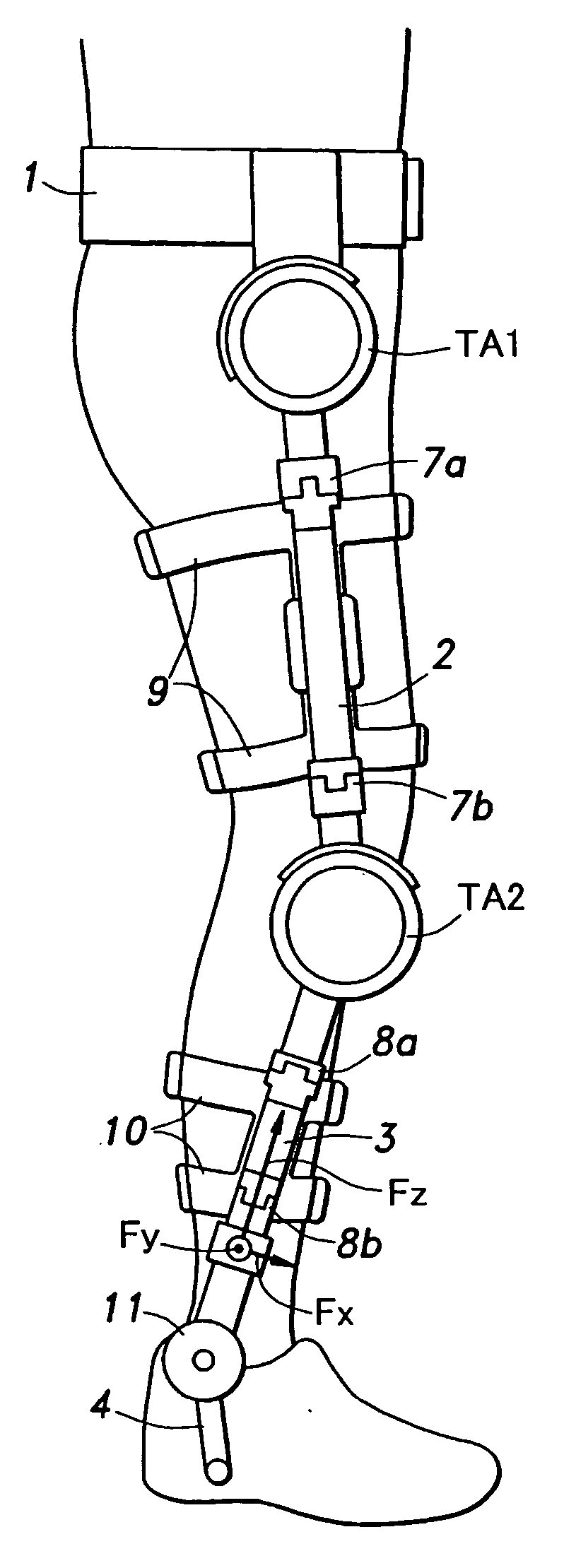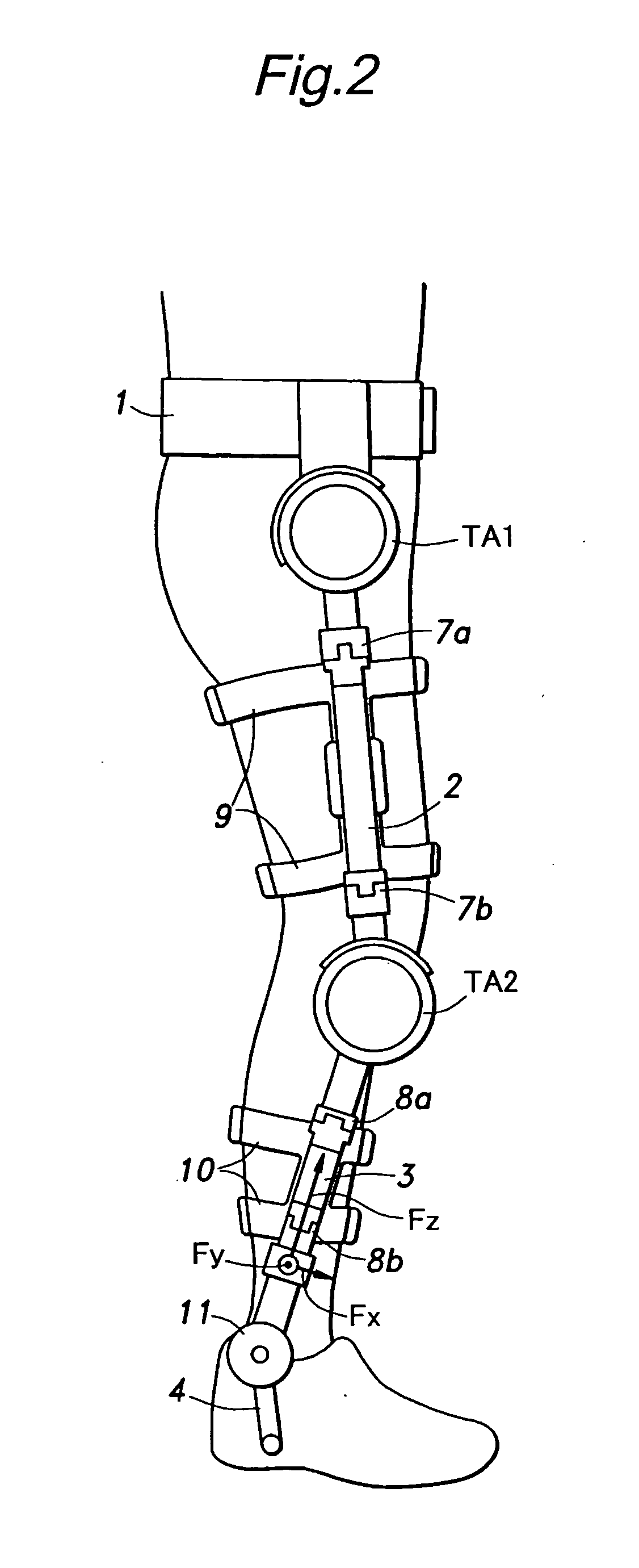Walking assistance device provided with a force sensor
a technology of force sensor and assistance device, which is applied in the field can solve the problems of inconvenient fastening and unfastening of such a belt, limited information provided by sensors for the control of walking assistance device, and user discomfort, so as to facilitate the effort required, facilitate the wearing of the retaining member of the thigh, and facilitate the effect of force being effectively transmitted to the thigh
- Summary
- Abstract
- Description
- Claims
- Application Information
AI Technical Summary
Benefits of technology
Problems solved by technology
Method used
Image
Examples
Embodiment Construction
[0029]FIG. 1 is an overall perspective view of an exoskeltal walking assistance device embodying the present invention, and FIG. 2 is a side view showing the walking assistance device when worn by a user. As shown in FIG. 1, the walking assistance device comprises a pelvis support member 1 adapted to be worn on the pelvis of the user, a thigh support member 2 which is vertically elongated so as to be placed on the outer side part of each thigh of the user, a leg support member 3 adapted to be placed on the outer part of each leg of the user, and a foot support member 4 adapted to be engaged by the shoe worn on each foot of the user. The “thigh” as used herein means a part of the limb extending between the hip joint and knee joint, and the “leg” as used herein means a part of the limb extending between the knee joint and ankle.
[0030] As shown in FIG. 3, the pelvis support member 1 includes a base portion 1a made of a relatively rigid material and provided with the shape of letter-U ...
PUM
 Login to View More
Login to View More Abstract
Description
Claims
Application Information
 Login to View More
Login to View More - R&D
- Intellectual Property
- Life Sciences
- Materials
- Tech Scout
- Unparalleled Data Quality
- Higher Quality Content
- 60% Fewer Hallucinations
Browse by: Latest US Patents, China's latest patents, Technical Efficacy Thesaurus, Application Domain, Technology Topic, Popular Technical Reports.
© 2025 PatSnap. All rights reserved.Legal|Privacy policy|Modern Slavery Act Transparency Statement|Sitemap|About US| Contact US: help@patsnap.com



